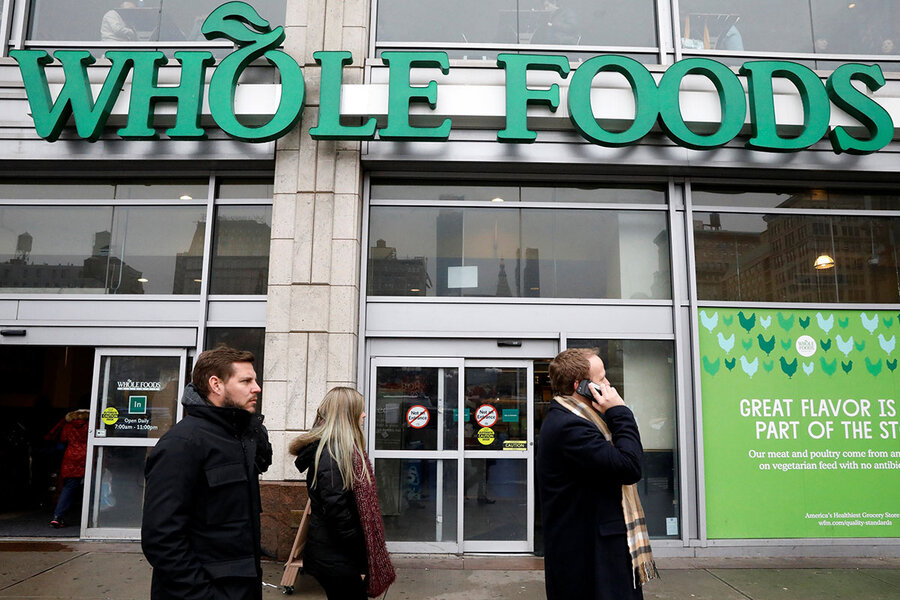Organic food is more popular than ever, so why is Whole Foods struggling?
Loading...
Whole Foods may have led the charge on organic food, but it's in danger of being left behind by the movement it helped create.
The supermarket chain reported declining in sales for the sixth quarter in a row, experiencing 2.4 percent fall in sales compared to the first quarter, amidst an increasingly competitive organic food retail market.
"We are refining our growth strategy, refocusing our efforts on best serving our core customers, and moving faster to fully implement category management,” said the chief executive officer of Whole Foods, John Mackey, in a statement following the release of the report.
The Austin-based store said at the end of 2013 that it was planning to grow its 470 US locations to more than 1,200. But the new report shows a shift from expansion to consolidation, as it closes nine stores this quarter.
"The more conventional, mainstream supermarkets have upped their game," Mr. Mackey told investors, reported the Wall Street Journal. "The world is very different today than it was five years ago."
The numbers back his claims: Sales of organic products increased 209 percent between 2005 and 2015, topping $43.3 billion in 2016, the US Organic Trade Association said. Studies from the US Department of Agriculture also underscore the rapid development of the industry. As a micro example in New Mexico, for instance, the number of organic farms grew from 67 in 2011 to 166 in 2014. The United States Department of Agriculture counted 12,634 organic farms in the US overall in 2014, the date of the last farm survey.
Whole Foods, who brands itself as "America's healthiest grocery store," is no longer the only market for fresh, minimally processed produce and foods. Now nearly three out of four grocery stores offer organic products, according to USDA.
In addition to the popular farmers’ markets popping up in more and more cities, retailers including Walmart, Kroger, Aldi, and Costco all offer organic selections to the consumers flocking to their aisles for their lower prices.
According to the Seattle Times, Costco in 2015 became the biggest organic grocer, selling more than $4 billion of organic food each year, while Kroger’s recently launched organic line also netted $1.2 billion in sales in 2014.
To fight its "whole-paycheck" reputation and falling sales, Whole Foods launched a cheaper grocery store chain named “365” to appeal to Millennials, a generation who are keen on wellness and exercise. As the Christian Science Monitor noted in 2016:
The 365 chain of stores is designed for Millennials and budget shoppers. According to the website, it will feature heavier discounts, competitive prices, and a few innovative additions, like Whole Food “Friends,” third-party businesses that operate in or nearby the 365 shops.
Whole Foods is aware of its pricing problems. On Wednesday, Mackay told investors that "in some cases, when we have particularly a strong quality advantage, the gap might be a little larger. But if they’re selling the exact same items and exactly the same brands, we feel like we really need to be competitive on those prices."
Others have pointed to Whole Foods’ ambitious expansion plan and its poorly managed stores as the reasons behind the store’s lower sales.
"The company finally told investors what they've been waiting more than a year to hear: Whole Foods will give up on a misguided goal of adding 1,200 new stores to an over-retailed America," wrote Shelly Banjo, a columnist at Bloomberg.
"Instead, it will close unprofitable stores and hold back on building more of its lower-priced 365 stores until it's more confident in the concept's long-term performance."
Editor's note: This report has been updated to clarify the number of organic farms in the United States recorded in the most recent USDA farm survey.








